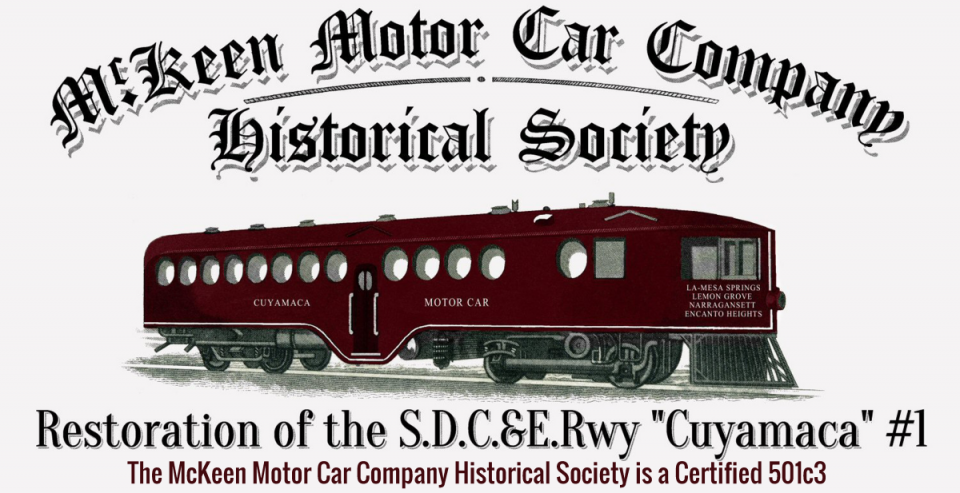“Business Men’s Association of Auburn”

The Business Men’s Association of Auburn has been urging the Lehigh Valley Railroad to install a McKeen self contained motor car on some of the line running out of Auburn. Their secretary, Chas. G. Adams, has kindly loaned the Geneva Chamber of Commerce the cut which appears at top of the article. This is the at style of car that the Buffalo, Rochester, & Pittsburgh Railroad has recently installed on their lines. All most two years ago the Geneva Chamber of Commerce called a meeting of the people living in the towns along the line of the Naples Branch at which meeting petitions were prepared asking for better service. These petitions were circulated in the towns and in Geneva and a large list of names secured, which was sent to the officials. In view of the progress that has been made in the past year or two in motor car construction and also (the action taken by the Auburn Business Men’s Association in suggesting that the Lehigh Valley road use the McKeen Motor Car), it was thought a description of the car would be of interest.
The gasoline railway motor car shown in the accompanying illustration is a 70-foot car, representing the latest development of the standard product of the McKeen Motor Car Company, of Omaha, Neb., and serving as an example of a type of car which has come into considerable favor on all roads. The railroads for the past few years have been interested in the development of the self- propelled motor car and considerable study has been given to the adaptability of this type of car for branch and feeder lines. The first car of the pattern now known as McKeen Motor Cars was built in April, 1905, for the Union Pacific Railroad Company. Several more cars were built for the Union Pacific, and as a result of their operation on that road, a demand was created from other roads. The Number of McKeen cars in daily revenue service is now 61, on 27 different railroads and interurban lines. In the West, and especially on the Pacific Coast, they have been installed for branch and feeder line, as adjuncts to the steam service out main terminals and for the interurban service.The standard McKeen Motor cars are built in two sizes, 55 feet and 70 feet in length.
The cars are all-steel construction, the front being wedge-shaped, and the rear rounded like the stern of a boat. Experience has led the makes to conclude that this form of car body is most efficient, as observation indicate that it can run one mile further per gallon of gasoline than a car of or ordinary shape with square front and upper deck lights. The roof is semielliptic and the windows in the side of the car are round. While the roof is lower than in a standard coach, the car is well ventilated, fresh air being delivered at the floor of the car and the foul air exhaust at the roof means by means of successful ventilation. The round windows are dust, wind and water tight and are considered to give the passengers a better view then the ordinary car window. The center entrance permits of stronger car form than end entrance doors and does away with the accumulation of ice and snow on the steps. The center entrance also permits the use of semi-circular seat at the rear end, which increases the seating of the car and provides and attractive observation end. The steel sides of the car are utilized as a combination plate and truss girder to increase strength of the construction. The car is fireproof and practically indestructible.
The forward end of the car is utilized for an engine room which is 12 feet long. (In a 70 foot car now building for the Norfolk and Southern Railway the car will carry mail, baggage and express matter and room for 60 passengers.) The car shown in the illustration is of special interest, as it weights but 67,000 pounds and is planned to do the whole service of an entire train weighting approximately 500,000 pounds. The dead weight per passenger carried is one of the most important items given consideration in economical operation of railroads, and the self-contained car of this weight is offered as lightest weight per passenger carried in service at present day.
The cars are propelled by a six cylinder variable speed gasoline engine, designed and build by the McKeen Motor Car Company. It is rated at 200 H.P., but devolves 265 H.P. on the testing floor. It is air starting and reversible and is mounted on the front truck independent of car body, in order to eliminate all vibration to the car. The transmission is direct to the main driving axle by means of a silent chain. Two speeds are provided and the car can be operated at 50-60 miles per hour in either direction. A speed of 75 miles per hour has been obtained.
Under ordinary conditions, one gallon will run the McKeen Car Three miles. The cost of fuel per car-mile is therefore approximately 3 cents (This was not in the article but 100 gallons cost about 23 1/2 cents in 1910); repairs and malignance cost from three to five cents per mild; cleaning and terminal attention expense per car-mile is approximately .005 cents, motorman’s wages average from $30.00 to $120.00 per month and conductors wages from $70.00 to $100.00 per month. The total expense on a car-mile basis varies according to the mileage made per day. It necessarily follows that a car making 250 miles per day would operate at less cost per mile a car only 120 miles per day.

